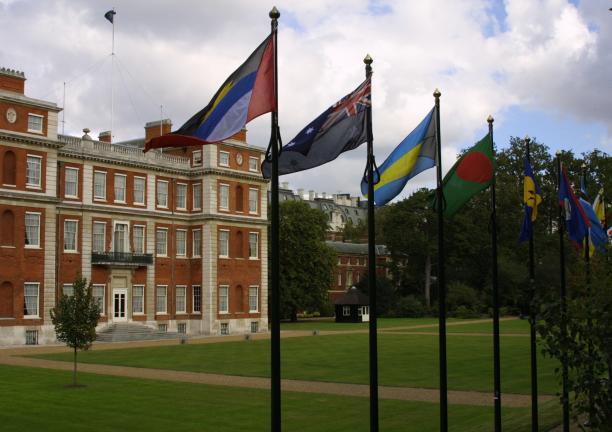When most people on the continent hear “creative industry,” thoughts often rush to Nollywood blockbusters or chart-topping Afrobeats. But Africa’s creative sector is so much more and it is fast becoming a pedal for economic transformation, sustainable development, and renewed identity. As digital technologies sweep across borders and populations surge with youthful energy, Africa’s creative economy stands at the crossroads of ambition and potential.
Redefining the Creative Sector
According to the latest United Nations Trade and Development (UNCTAD) report, the creative economy stretches behind the scenes, from filmmakers, writers, and designers, to architects and digital entrepreneurs. It’s a dynamic engine that produces and distributes goods and services grounded in imagination, innovation, and intellectual capital.
Yet, for all its transformative potential, the creative sector in Africa is often seen through a narrow lens. Too often, it’s reduced to films and music alone. It’s time to recognize its wider scope and far-reaching impacts.
Building Sustainable Impact
Few sectors are so deeply woven into both culture and economics. The creative economy pulls in an astounding $2.3 trillion globally each year (3.1%) of global GDP, employing about 6.2% of the world’s workforce (UNESCO, 2024). For G20 nations and emerging markets alike, creative sector contributions are remarkable, serving not just as financial engines but as drivers of intangible value: trust, integrity, and cultural pride.
In Africa, the significance is profound. Nigeria, South Africa, and Egypt rank among the continent’s top creators, collectively contributing up to 7.3% of global GDP and over 12% of global creative employment. Below, key trends spotlight the sector’s vibrancy.
Key Sectoral Trends in the Creative Economy
| Sector | 2023/Latest Figures & Key Trends | Notable Regional Breakdowns/Features |
| Advertising | - Global ad revenue: US$806B (57.7% digital). - Gaming ads spend: US$70B (2022) → US$137B (2027). | - N. America: 44% - Asia-Pacific: 32% - EMEA: 21% - LATAM: 3.4% |
| Architecture | - Healthcare design growing; office demand is worsening. - 12 top firms from China, 5 India, 6 Philippines. - AI & VR reshape workflows. | - Asian firms rising rapidly. |
| Audiovisual (Film & TV) | - Global box office: US$33.9B (+30.5% y-o-y). - Streaming outpaces traditional media. - India produces 29% of global films (2022). | - India leads output. - OTT platforms disrupt TV. |
| Books & Publishing | - Book Tok and screen adaptations drive sales. - Synergies: webtoons, media blends. | - 2022 top revenues: US$26.1B (US), US$9.9B (Germany), US$9.1B (India). |
| Music | - Recorded revenue: US$28.6B (+10.2%). - 67% from streaming. - Live music rebounds; virtual concerts rise. | - Sub-Saharan Africa: +24.7% - Latin America: +19.4% |
| Video Games | - Revenue: US$227B (top creative sector). - Cloud gaming CAGR: 45.5% (to US$20.9B by 2030). - Cross-sector influence grows. | - Türkiye: 24.1%, Pakistan: 21.9%, India: 18.3% CAGR (2021–26). |
| Visual Arts | - Market: US$65B (slight drop). - APAC collectors rising. - Online/Media expand reach. | - US: 42%, China: 19%, UK: 17%. |
| Royalties & Earnings | - 2022 royalties: US$13.4B (+26.7% y-o-y). - Digital is top source (35%). | - Europe: 54.8%, NA: 24.5%, APAC: 15%, LATAM: 5.1%, Africa: 0.6%. |
Why the Creative Sector Matters—Now More Than Ever
Stories from the African continent are finding their voice and global audiences. But this is not just about storytelling, it is about jobs, dignity, and economic resilience.
| Why the Creative Sector Matters Now | Barriers Holding Back African Creativity | The Path Forward: Unlocking Opportunity | What’s at Stake |
| Massive Employment: Nigeria’s creative industries provide jobs for 3.2 million people (6% of the workforce). | Weak IP and Royalty Systems: Monetization suffers from poor copyright and digital royalty systems. | 1. Strengthen Legal and Digital Frameworks: Build IP protection and robust digital royalty infrastructure. Support pan-African digital content platforms. | Job Creation: Potential for millions of new youth jobs. |
| Youth Dividend: Africa’s youthful, digitally native population is a catalyst for fresh content creation and consumption. | Limited Funding and Investment: Sparse finance for creative projects and entrepreneurs. | 2. Invest in Education and Skills: Foster creative hubs, academic partnerships, and holistic training (arts, tech, business). | Cultural Pride: Strengthening African identity and pride. |
| Rapid Revenue Growth: Sub-Saharan Africa’s music industry revenue surged 24.7% in 2023, led by streaming revolution. | Infrastructural Gaps: Broadband, modern tools, and distribution are still underdeveloped. | 3. Expand Access to Finance: Prioritize creative funding via banks, governments, grants, and incubators. | Economic Diversification: Breaking dependence on commodities. |
| Global Reach: Nollywood, African fashion, and gaming are winning international audiences—shaping global taste and perception. | Skills and Education Gaps: Lack of professional training hinders the sector. | 4. Upgrade Infrastructure: Boost digital connectivity and build modern creative spaces. | Shaping Global Perceptions: Authentic African narratives reach the world. |
| Cross-Industry Collaboration: Music, gaming, design, and literature blend for fresh or hybrid value streams. | 5. Promote African Stories Globally: Support cross-border collaborations, festival participation, and digital export of African content. |
A Call to Action
Africa’s creative economy is a formidable force, fusing heritage with innovation and placing the continent on the frontier of economic and cultural renewal. Success will require action: from governments to investors, and from creators themselves. Without bold reforms—in legal frameworks, education, finance, and infrastructure—opportunities will be lost, talents may migrate, and one of Africa’s greatest assets could remain underleveraged.
But the upside is compelling: millions of jobs, elevated cultural pride, a diversified economy, and the power to shape how the world sees—and hears—Africa. The creative sector isn’t just Africa’s future; it is its boldest hope, ready to be unlocked.










